► Coupe-styled SUV-hatchback mash-up revised for 2025
► Quite a significant exterior redesign
► New seats and tech upgrades, but still low pricing
These days a non-premium c-segment hatch is a tough sell in the UK. Buyers generally either want an SUV of this size or something with a nice badge. That said, Citroen has done a decent job with its Citroen C4.
Reincarnated in 2021 as a coupe-styled SUV hatchback amalgamation, it’s a recipe that has worked as it’s the second best-selling C-segment hatch after the Volkswagen Golf. Citroen’s focus on comfort, style and value has gone down well with buyers – as has the option of the electric e-C4 reviewed separately, so you can’t blame it for not wanting to deviate too far with this updated-for-2025 model.
At a glance
Pros: Exceptional comfort, spacious rear seats, good value for money
Cons: Hybrid system isn’t the slickest, styling arguably isn’t a step forward
What’s new?
First thing to note, where are the chevrons at the front? Gone as part of Citroen’s new family face, accompanied by a new logo, and it’s not an improvement in my opinion. The front end is really quite different, more new-generation than facelift. There’s a new grille and a new lighting signature made up of three horizontal LED bars at each, repeated again at the rear. There’s new ‘CITROEN’ lettering at the rear now too, as is all the rage. Citroen says it’s made it look simpler, I’m not sure I agree.
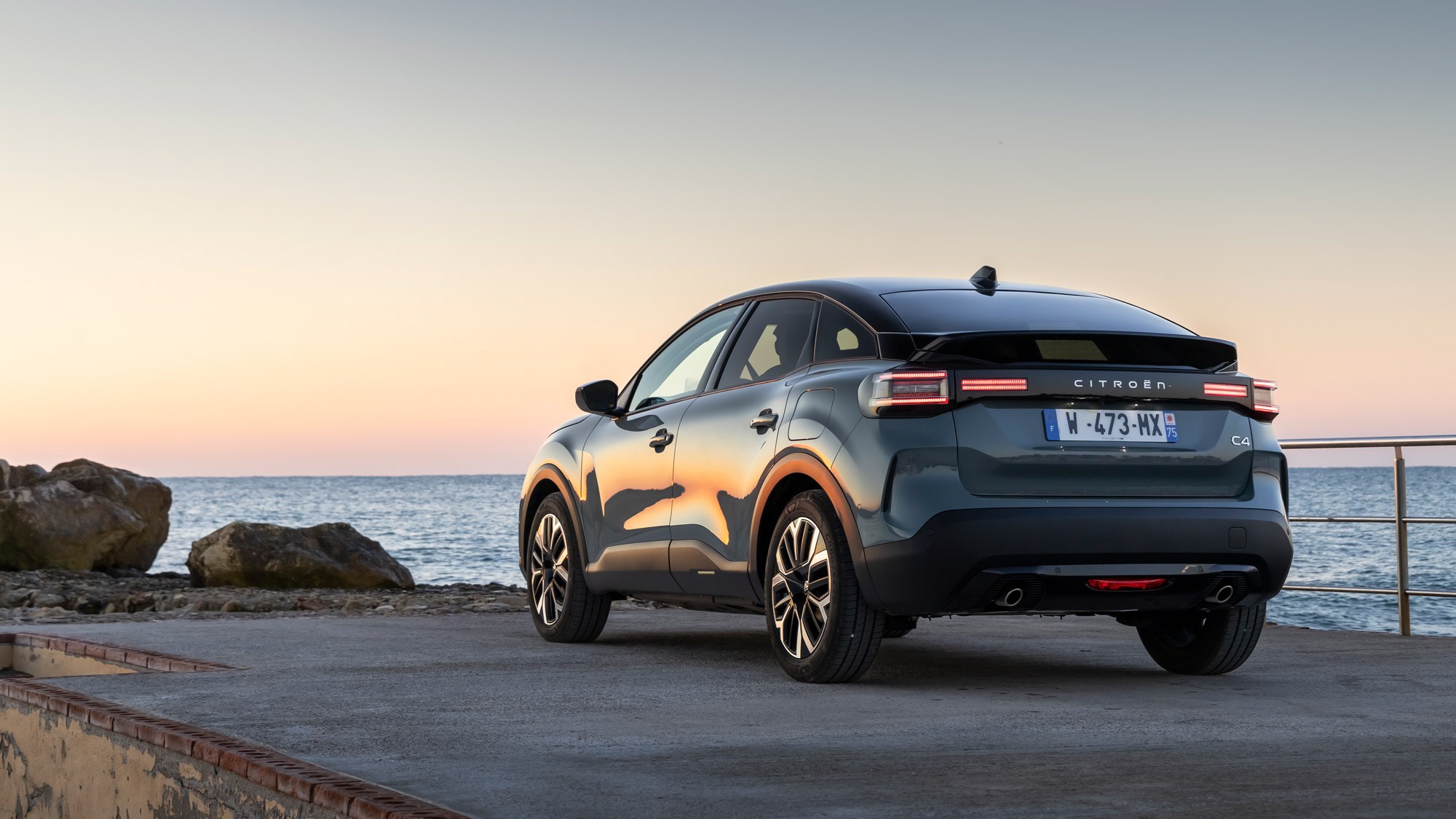
Inside Citroen’s redone it’s already impressive ‘Advanced Comfort’ seats with more support and padding and there’s a redesigned digital instrument cluster. But I won’t pretend, on the whole, this is a significant change.
What are the specs?
Ignoring the electric e-C4, there’s the choice of three ICE versions, all revolving around a turbocharged 1.2-litre petrol engine. All are now automatics too, with all manual versions of the C4 discontinued. If you’ve ever driven a manual Citroen, you’ll know this isn’t a huge loss. The diesel versions are also now unsurprisingly dead.
The C4 gets the new mild-hybrid system doing the rounds in everything Stellantis, using a 1.2-litre turbocharged petrol engine mated to a 48-volt hybrid system. In entry-level guise, it puts out 99bhp, but here we’re sampling it with 134bhp. Both use a six-speed dual-clutch automatic.
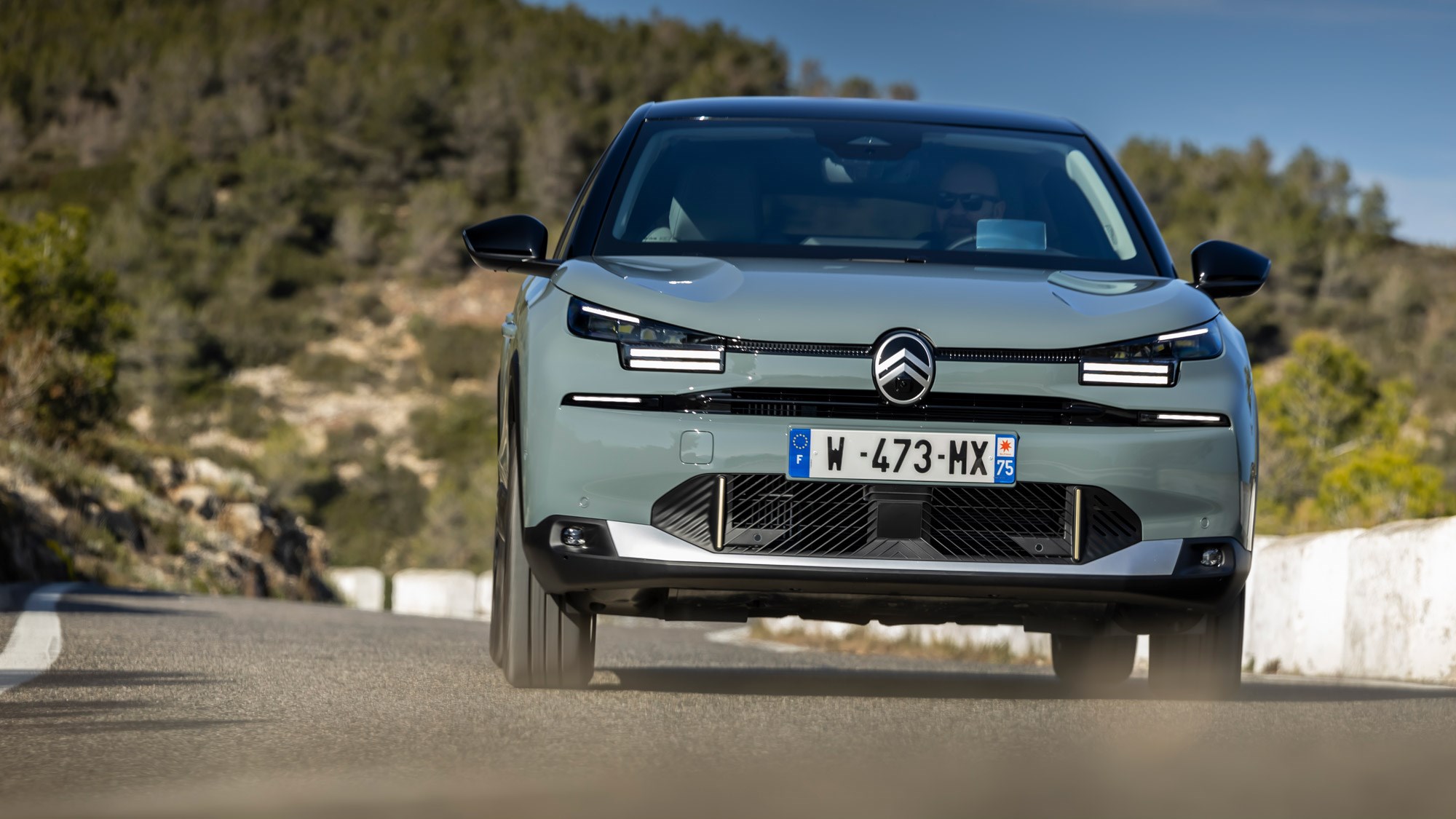
Citroen claims a 20 per cent improvement in fuel economy compared to non-hybrid models, though the 48mpg achieved on the test drive isn’t much different to any pre-facelift petrol C4 I’ve tried in the UK.
Citroen also continues to sell its old-generation ‘PureTech 130’ engine, mated to an eight-speed auto, though it’s noticeably slower and less efficient on paper… yet £1,400 cheaper to buy. The choice is yours.
How does it drive?
It’s comfier than your favourite armchair. The ride is terrific at higher speeds in particular, ebbing and flowing with the contours of the road, pitching slightly under braking and riding sharp bumps and crests smoothly. It’s all rather remarkable on what is a mainstream car.
Thank the standard ‘progressive cushions’ – hydraulic stops at the end of the damper stroke, which absorb and release kinetic energy to prevent bouncing. Despite the soft suspension set-up, the C4’s no wobbly jelly though, with body movements controlled and quick to settle. Refinement is excellent and the C4 makes for a great long-distance car, even despite all versions riding on 18-inch alloys.
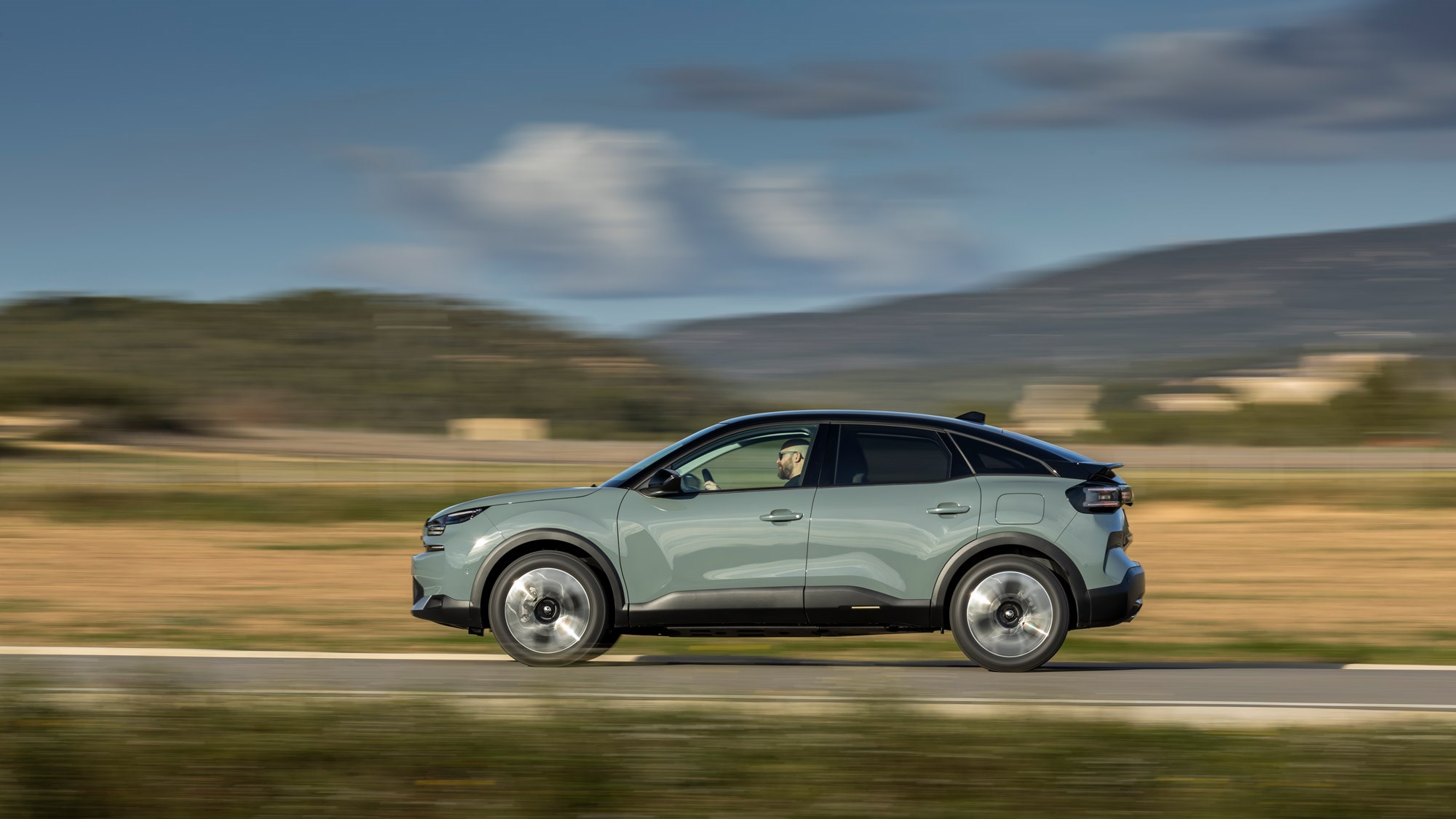
The hybrid system also works better in the C4 than any other Stellantis application I’ve tried it in to date – with a decent lick of pace for overtakes and getting ahead of traffic, if not as brisk as its eight-second 0-62mph time would have you believe.
The hybrid system isn’t the smoothest, though, with an indecisive automatic gearbox sometimes depriving you of power when you need it, though gearshift paddles are fitted so you can take over. Make no mistake, there are sweeter handling cars in this class, but none do comfort or refinement so well.
What about the interior?
Generally very pleasant, if hardly any different to the previous model. It’s no bad thing in this instance as the C4’s cabin is well laid out and intuitive to use. The 10.25-inch touchscreen sits atop the dashboard and is joined by a new digital instrument cluster, though it hardly seems to look or perform any different to the screens of old. It’s all quite dark and monochrome, though, and can look a bit uninspiring next to Citroen’s more colourful interiors in its other cars.
Physical climate buttons are present and correct and the steering wheel is logically laid out for ease of use. If you hate the button-free cabin of a new VW Golf you’ll like the Citroen C4. Material quality is good for the price, with plenty of soft-touch materials, though I’m massively against the gloss black centre console that will look scratched after a few thousand miles. The C4’s seats are also impressively comfortable – not that they were bad to start with – with plenty of adjustment to them too.
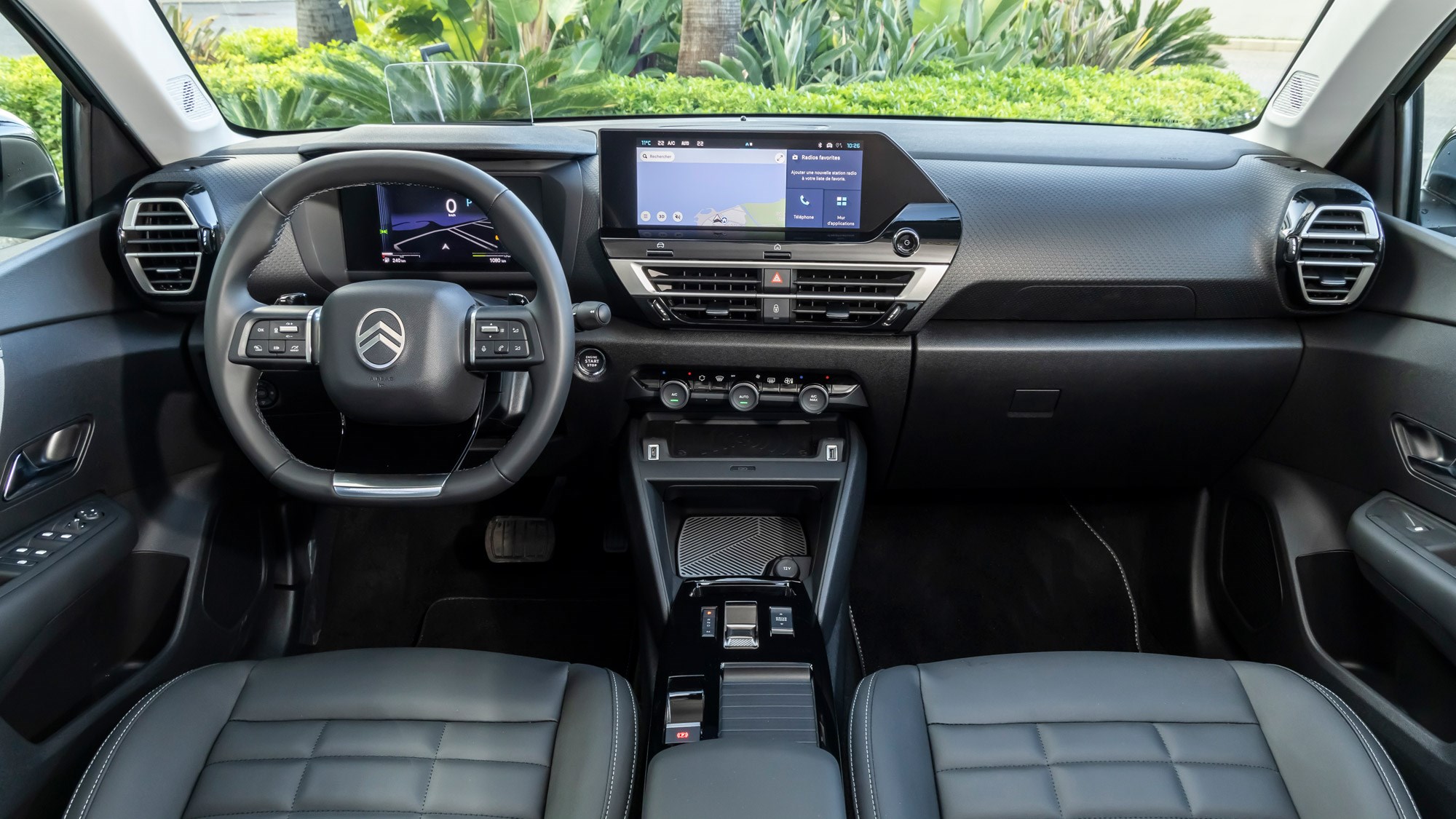
Rear seat space in the outermost perches is excellent, with levels of rear legroom more in line with cars from the class above, even despite the coupe-like roofline. The middle rear seat is all but useless for adults, however, because of the indent in the rooflining from the lights. Boot space is very middle-of-the-road by class standards at 385 litres – a Skoda Scala offers a much larger boot for similar money.
Before you buy (trims and rivals)
Citroen has slashed the price of its electric e-C4 as part of this latest update by up to £5,600, and it’s meant that the price between the petrol car and EV versions is narrower than it’s ever been at £4,000.
Prices for the cheapest hybrid model remain attractively low at £22,995 for a hatchback of the size, undercutting a Ford Focus by a colossal £5,500. Even the cheapest Kia Ceed is more expensive.
Three trims are available – You (only offered with the cheapest 99bhp hybrid), Plus and Max. Standard equipment is generous for the price, too, including 18-inch alloy wheels, Citroen’s trick suspension, dual-zone climate control and a 10-inch touchscreen.
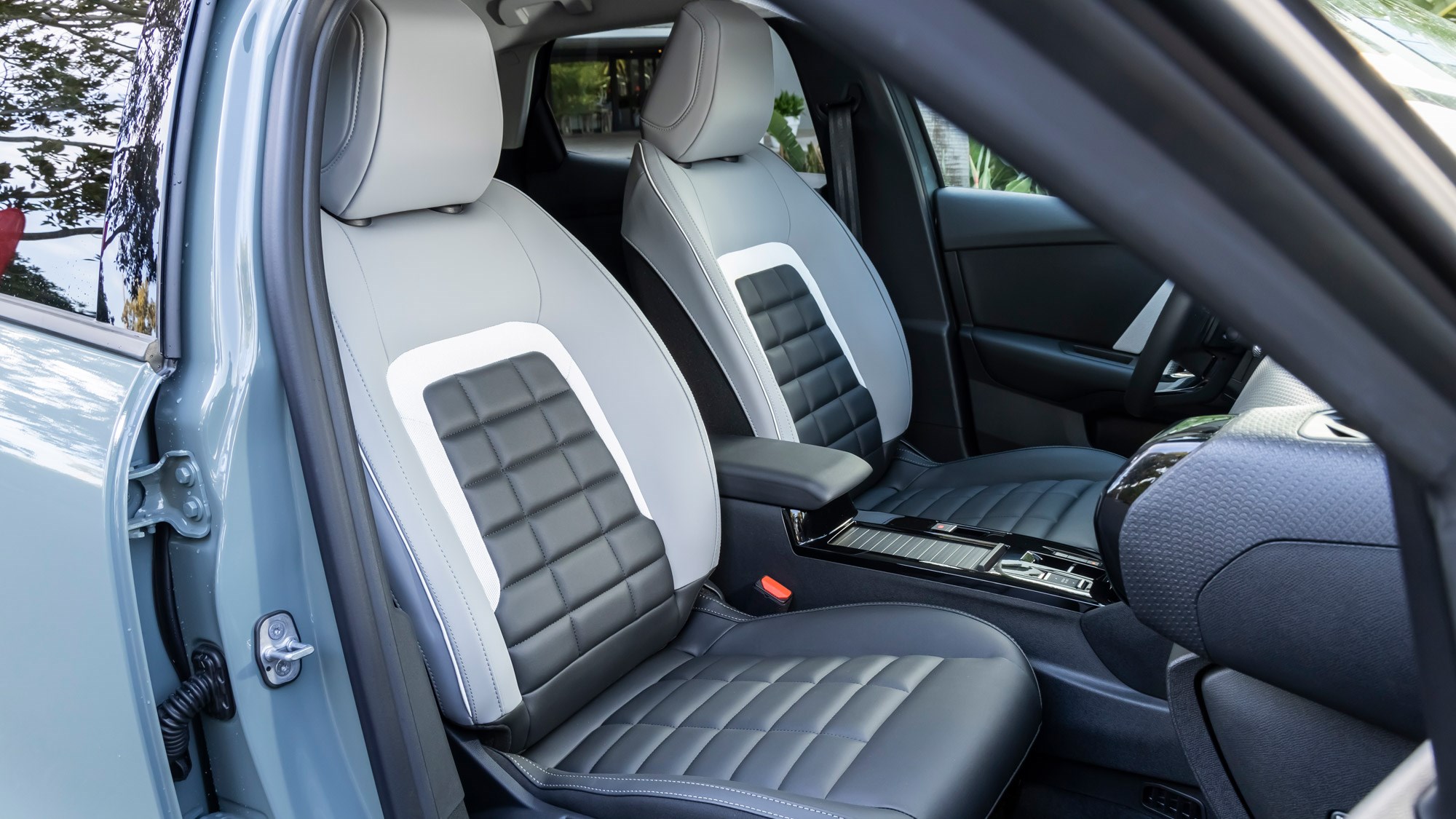
The Plus model costs from £23,385 and brings the new, larger digital instrument cluster, a reversing camera and satellite navigation. At the top of the range, the Max gets a heated steering wheel, heated and electric front seats and adaptive cruise control and all for £25,575 – remember you wouldn’t even get a base-spec Golf for that.
Options are limited to paint colour and the £500 Techno Pack, bringing a 360-degree camera, a more advanced adaptive cruise control and wireless smartphone charger, though I’d give this option a skip personally.
Verdict
This is a pretty small update in terms of meaningful changes for the Citroen C4, but it’s one that exemplifies that Citroen knows what it’s doing with everyday normal cars. Its comfort is outstanding and improved seats only take it a step further.
I’m not fully sold on its mild-hybrid system, and I don’t think it’s efficient or refined enough to justify the extra £1,400 outlay over the standard petrol 130 model. But even still, the C4 is an easy-going, intuitive car that gets on with the job of being solid family transport with minimal frills or fun, with no major weakness. And it should be applauded for that.
Specs are for a Citroen C4 Max Hybrid 136